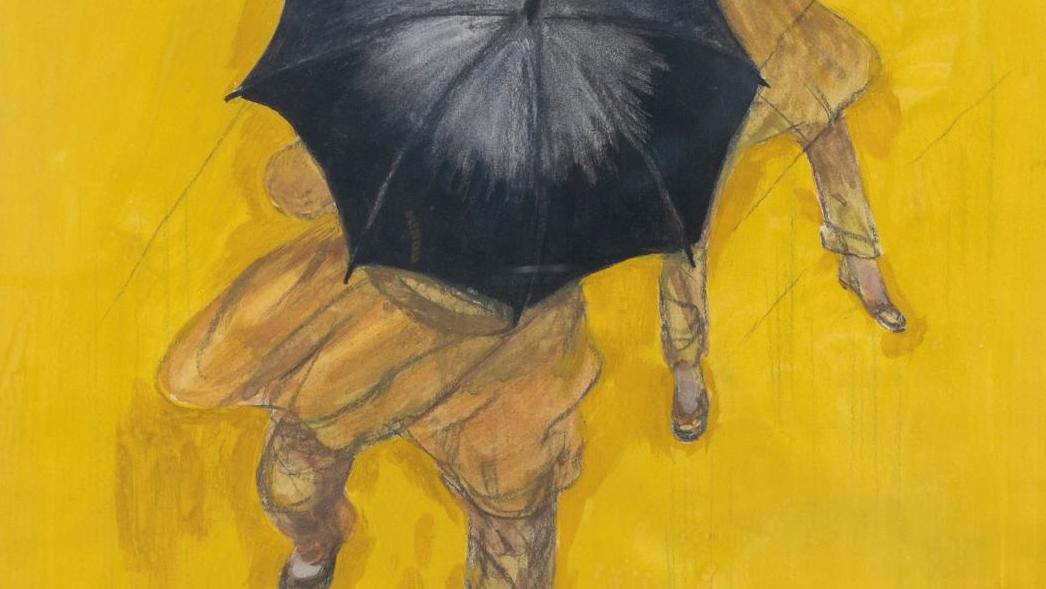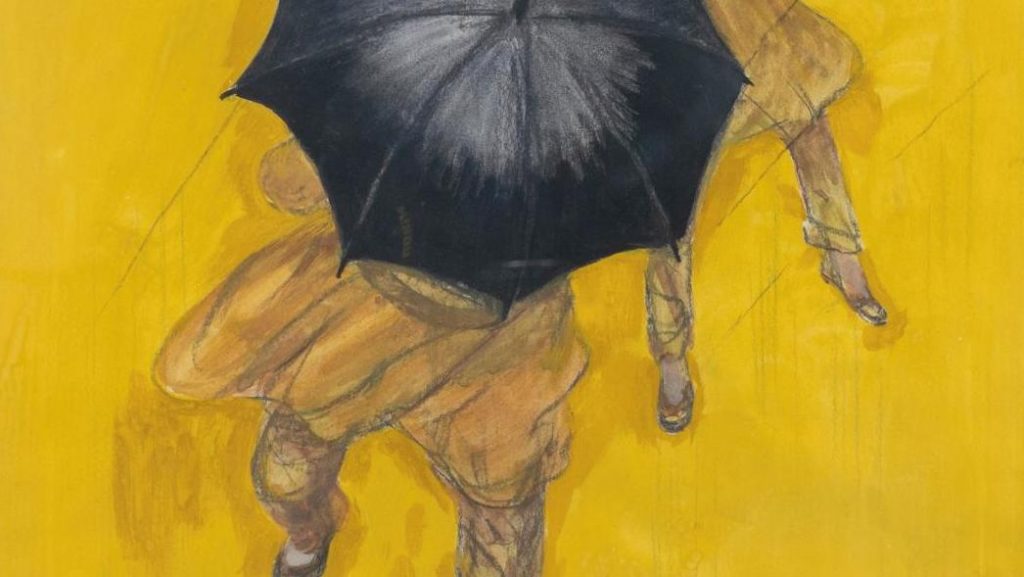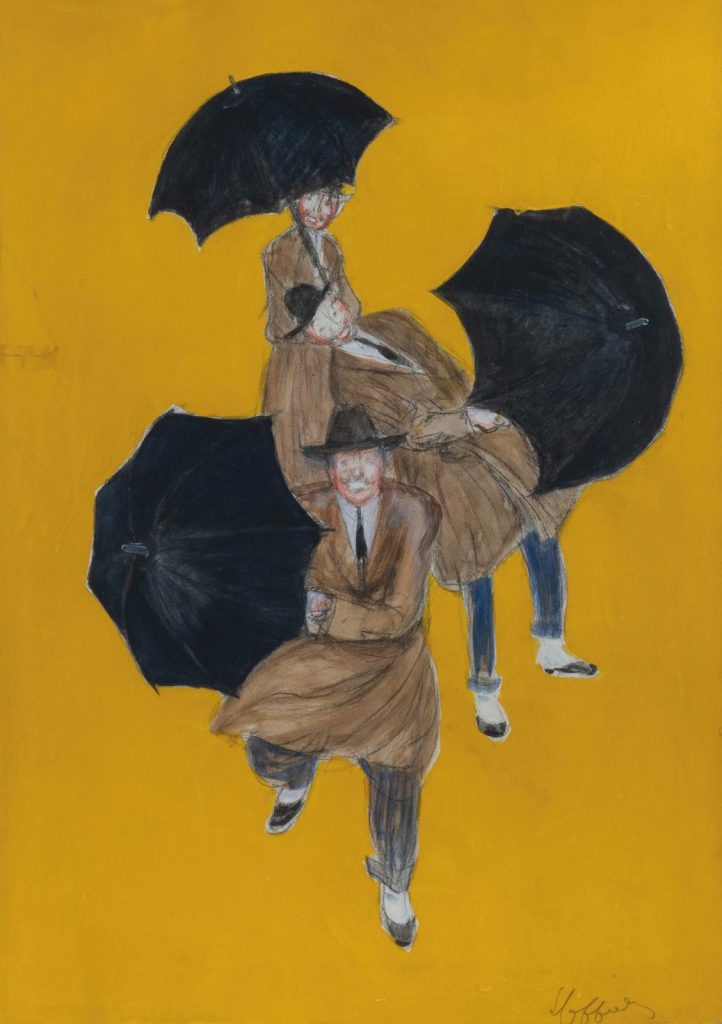Featured: 5th-6th C. AD Sogdian silver-gilt rhyton shaped as boar’s head, large ancient Roman mosaic panel with 18 parakeets, sculptures, fossil skull of dreaded Mosasaur, fabulous geodes
ESSEX, U.K. – The most famous prehistoric depictions of animals in art are the paintings which were discovered in the 20th century on the walls and ceilings of the Chauvet and Lascaux Caves in France. Generally estimated at 30,000-32,000 years old, those paintings seem positively modern when compared to a painting of a wild pig found in an Indonesian cave in 2021 and believed to be no less than 45,500 years old. Throughout the ages, animals have been favored subjects in artworks, which is the theme of TimeLine’s December 2 auction in Harwich, England. The 410-lot session presents a finely-curated selection of zoological art of the ancient world together with fossils, natural history relics and many other exceptional antiquities.

Large and striking, a Sogdian (ancient Iran) silver-gilt rhyton (drinking vessel) from the 5th-6th century AD was masterfully crafted in the form of a wild boar’s head that exudes undeniable personality. The detailed facial features on this fantastic piece include a large snout, curled tusks, alert eyes with heavy lids, and erect ears. The head and back are framed by a boar’s mane. It measures 8½ inches long and weighs 1.3kg. Acquired from a New York gallery in the 1970s, it has since remained in a London private collection. It will convey with an academic report from Dr Raffaele D’Amato and three black-and-white photographs of the object that were taken circa 1970s, prior to its cleaning. It comes to auction with a £60,000-£80,000 ($80,370-$107,160) estimate.
In ancient Rome, private residences often reflected the citizenry’s love for the mosaic tradition through artworks, like a tesserae panel in the sale that is very similar to an example in the Louvre. From the late Roman period, the painstakingly-created mosaic panel depicts rows of endearing parakeets in various standing and perching poses. Owners of such panels usually commissioned the works to specifically depict animals they loved or with which they had an association, so it is safe to assume that the original owner of this sizable (83½in x 80¾in) panel was a bird fancier. The artwork’s line of provenance includes acquisition by a Montreal, Canada, collector in the 1960s; and Archaeologia Gallery in the 1980s. Its auction estimate is £30,000-£40,000 ($40,190-$53,580).
Continuing in a Roman theme, a circa-2nd century AD marble figure of Mithras-Sabatios shows the Phrygian (Anatolian) deity on horseback, garbed in a belted tunic, Persian trousers and a riding cloak. Beautifully carved, the figure imparts great character. Its record of ownership dates back to a 1980s collection from Bavaria. Together with an academic report from Dr Raffaele D’Amato, it is now offered with an auction estimate of £12,000-£17,000 ($16,070-$22,770).
Dogs are said to have first been domesticated some 30,000-40,000 years ago. Ever since, they have been loyal companions to humans and portrayed in literally every discipline of fine and decorative art. Ancient Roman were especially fond of dogs, and in fact, the traditional dog’s name “Fido” is derived from the Latin word fidelis, meaning “faithful.” The image of a peacefully-sleeping dog is carved into a Roman sardonyx cameo ring from the 2nd-3rd century AD, along with an inscription in ancient Greek tha translates to either “Be wakeful” or “(ring/seal) of Gregory.” Formerly in an English private collection of the late 1970s-1990s, it has a pre-auction estimate of £1,500-£2,000 ($2,010-$2,680).
A majestic Bactrian bronze zebu bull vessel with stopper dates to the 1st Millennium BC and is an especially fine representation of a bovine that symbolized strength, virility and herd-leadership to the earliest civilizations of the Indus Valley. Its distinctive anatomical features include a heavy dewlap and wide curving horns, setting it apart from other animals most often seen in the art of Mohenjo Daro and Harappa. The auction example became part of a New York collection in 1987 and was auctioned in 2013 at Bonhams, London. It will transfer to its new owner with an academic report from Dr Raffaele D’Amato, a copy of the relevant Bonhams auction catalog pages, and a copy of its own French passport No. 1119527. Estimate: £15,000-£20,000 ($20,090-$26,790)
A medley of animals decorates a Bactrian black chlorite “hand bag” ceremonial weight from the 3rd Millennium BC. It is adorned with lions, birds and ancient serpents which, in Bactrian art, often symbolize protection, regeneration and the connection between the earthly world and the spiritual realm. This type of object could have been carried or swung in ceremonies or processions. With provenance that goes back to the 1960s at Gallery Rosen Ancient Art in Tel Aviv, it subsequently went to a UK gallery, then joined the London collection. Estimate: £8,000-£10,000 ($10,720-$13,400)
Dating to the Cretaceous Period, circa 145-65 million years BP, a magnificent three-dimensional fossil skull of a juvenile Mosasaur “marine dinosaur” still possesses much of the same ferocity that made it a dreaded monster of the seas millions of years before humans existed. Its upper and lower mandibles, eye sockets and brain cavity are intact, including its jaw teeth and throat teeth. Measuring 17¼ inches long (with custom stand), it originated in Morocco, West Africa, and later became part of a Cambridgeshire, UK, collection. Estimate: £2,500-£3,500 ($3,350-$4,690)
Shaped by ancient oceans and deep-earth forces, geological specimens provide scientists and collectors, alike, with both a history lesson and tangible proof that nature is the greatest and most talented artist of all. Many spectacular geological specimens in the auction came from Artigas, Uruguay, prior to becoming the property of a London lady. Especially noteworthy, a monumental geode section features towering druzy grey quartz stalagmites. It stands 39¼ inches inclusive of its custom-made display stand and weighs a hefty 68.4kg. Effectively a cross-section of the earth’s natural architecture, this extraordinary specimen is estimated at £5,000-£7,000 ($6,700-$9,380).
Other highlights from the London geological collection include: an egg-shaped amethyst crystal geode display showing prismatic dark purple amethyst crystals on the inner surface with a large mass of calcite to one side, the calcite with clusters of small quartz crystals, £2,000-£3,000 ($2,680-$4,020); a free-standing polished geode section lined with dark purple amethyst crystals and calcite with small black crystals to one side, £1,800-£2,400 ($2,410-$3,210); and a striking and vividly-hued cut section of green celadonite geode with white quartz crystals to the outer wall, the internal wall lined with radiating clusters of prismatic amethyst and quartz crystals, £1,000-£1,400 ($1,340-$1,880).
TimeLine’s 2-6, 2025 auction will be held live at the company’s headquarters located at The Court House, 363 Main Rd., Harwich, Essex CO12 4DN, UK. All lots featured in this article (and in TimeLine’s printed catalog) will be auctioned during the Dec. 2 opening session. Internet bidders may pre-register online. Goods may be previewed in person at the gallery by prior arrangement only. Auction start time: 7am US Eastern time/12pm (midday) GMT. All remote forms of bidding will be available, including absentee, by phone (please book phone line 48 hours ahead of time) or live via the Internet through TimeLine’s bidding platform or LiveAuctioneers. TimeLine Auctions accepts payments in GBP and ships worldwide. Questions: call +44 7494 866514 or email Aaron Hammond at [email protected]. Website: https://timelineauctions.com.























